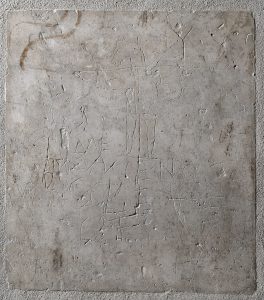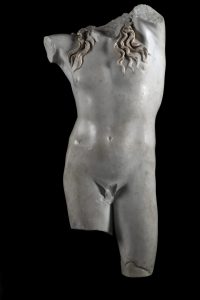Palladium
This head in Greek insular marble, most likely originating from the Palatine Hill area, belongs to a smaller-than-life-sized (c. 1 meter tall) statue of an armed Athena. The head is covered in a smooth helmet that leaves the goddess’s hair in view. The earlobe is pierced with a small hole where an earring must have been placed, while thin grooves along the rim of the helmet held metal curls applied to the sculpture. The almond-shaped eyes and elongated eyebrows, both characteristic of Ionian sculpture, along with the wavy locks of hair framing the statue’s forehead, all date the original to the late Archaic period or the early Severan age (480-450 BC). The latest mineropetrographic studies have been performed on this and other pieces “of Greek origin” to identify the geographic provenance of the marble used and to help identify the piece as an original or a Roman copy.
The small-sized image of an armed Athena takes the name of Palladium, a sacred statuette with the power to protect an entire city. According to one tradition, it was taken to Rome by Aeneas and kept in the Temple of Vesta in the Roman Forum.





